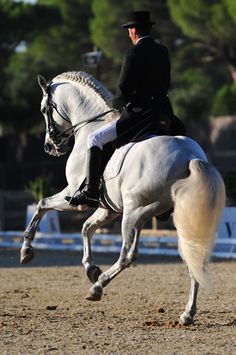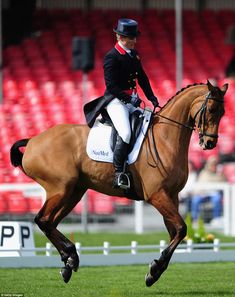Part B: The Link between the Footfall Sequence for each Gait During a Transition. By Fiona Darling
- Fiona Darling
- Mar 13, 2021
- 5 min read
Knowing the footfall sequence for each gait helps in understanding the link from one gait to another during a transition.
Each gait walk, trot and canter has a diagonal footfall of a front and hind leg. In the walk the front foot slightly precedes the hind foot. In the trot there are two diagonals each with a fore and hind foot at the same time and in the canter one diagonal with the inside hind leg and outside fore leg.
With the horses powerhouse being their hindquarters it is preferable to think of gait sequences as being initiated from the HQs.
The Walk Sequence: With a horse initiating their walk from a foreleg the sequence would be right fore, left hind , left fore, right hind, right fore, left hind, left fore, right hind….. While watching a horse at walk rather than focusing on the sequence left hind, left fore and right hind, right fore that would lead to imagining a transition to a pace it is more helpful to focus on the diagonal sequence that leads to imagining a trot transition from walk of right fore, left hind and left fore, right hind.
The Trot Sequence: right fore and left hind together, left fore and right hind together.
The Canter Sequence: In canter there is a leading side and a trailing side. In cantering to the left the left hind and fore legs lead and in cantering to the right the right hind and right fore legs lead.
The sequence for a left canter lead is right hind, Left hind and right fore legs together, left fore.
The sequence for a right canter lead is left hind, right hind and left fore legs together, right fore.
Connecting the Dots in Transitions from one Gait to the Next:
Walk to Trot Transition: In walk each foot fall is evenly spaced. The sequence of footfalls in the walk can come under consideration for a beneficial timing of the ask in the transition from walk to trot and for beginning to rise forward out of the saddle to the trot. Why is rising to the inside hind at the trot helpful to the horse? When travelling in a straight line it should be no more helpful to the horse for the rider to rise to one diagonal or the other. Just like people horses too can have a favoured side, some more than others. These one sided horse will make a movement to cause their rider to rise to a particular diagonal.
When turning and circling at trot, when the horse is arcing through their body and there is less room for their inside hind leg to step forward under their body, it is easier for a horse to have their rider rising at that time.
Consider being on a circle to the left at the walk ready for a trot transition. For the horse it is beneficial if the rider rises to the trot with the inside left hind (of the trot diagonal outside right fore and the inside left hind) so the focus of the time to ask in the walk is when the inside left hind initiates the step forward.
Trot to Canter Transition: The ideal timing for the ask from trot to canter when in rising trot happily is in the footfall sequence when the rider is sitting. For trot to a left lead canter the rider is rising to the left hind, right fore diagonal and sitting for the right hind, left fore diagonal. The ask initiates the left lead canter sequence starting with the right hind followed by the left hind, right fore diagonal then the left fore.
Walk to Canter Transition: The ideal timing for the ask from walk to canter would be when in walk the outside hind foot is about to lift of the ground ready to step forward and begin the first footfall sequence of the canter stride.
Flying Lead Changes: In canter there is a moment of suspension when all four feet of the horse are off the ground, this is the time when the horse is able to transfer their weight and positioning to move from one lead of canter to the other and initiating from their hind legs (for us it would be like a skip step).
Linda Parelli created isolations for flying lead changes with her Lead Change Ladder.
Lead Change Ladder:
Step 1. Canter, walk transitions with a suspension rein.
Step 2. Build to count 5 strides of canter then walk transitions to lighten the FQs and engage the HQs.
Step 3. Mobilising the shoulders allowing the horse to move away from the track by the riding area wall/fence and then swinging their shoulders back to the track.
(a) First at trot.
(b) then at canter with the horse having to maintain canter as a counter canter back to the track.
(c) then as a slower canter with more time and elevation in the moment of suspension in the canter.
Step 4. Use the Serpentine or Bowtie Pattern at canter to ask for simple changes of canter, walk, canter transitions then build to flying changes.
The Lead Change Ladder offers horse and rider the opportunity to develop their feel, timing and balance for successful flying lead changes.
For developing flying lead changes the rider must first be able to ride a circle and go straight at canter using their core and shoulders without having to overweight a stirrup. Before the flying lead change have one stride of straightness, as the next stride is initiated first from the outside hind then the diagonal pair of inside hind and outside fore swing the shoulders further over before the outside fore touches the ground, the inside fore will then be the next to touch the ground. As the inside fore touches the ground this is the time to ask for the flying change enabling the horse to make the first change through their HQs in the moment of suspension (as if skipping). If the rider’s timing is out it could be at a time when the horse is already committed to that canter lead and unable to change or at a time that causes the horse to change through the FQs and disunite or change in the FQs in that stride and then the HQs late in the next stride.
To ask for the flying lead change the rider takes their to be new outside leg slightly back and their to be new inside leg at the girth or slightly forward at the same time lifting their new inside seat bone and hip up and slightly forward.
Horse’s Weight Distribution for each Gait and Rider’s Weight Shift in Asking for the Transition
The horse’s % weight distribution:
At Walk 60 FQs : 40 HQs
At Trot 50 FQs : 50 HQs
At Canter 40 FQs : 60 HQs
For walk the rider rocks their hips a couple of degrees forwards.
For trot the rider lifts up through their sternum in the rhythm of the anticipated trot.
For canter the rider slightly overweights their outside stirrup and seat bone enabling them to lift and take slightly forward their inside seat bone.
The first picture shows the start of a left lead canter stride.
The second picture shows the mid flight change of lead in the flying change.




Comments